Abdomen (AB)
Musculoskeletal (MSK)
Pediatric Echo (PE)
Adult Echo (AE)
OB/GYN (OB)
Physics (SPI)
Breast (BR)
Other (OT)
Vascular (VT)
Fetal Echo (FE)
Pediatric (PS)
POCUS
Maximize your time: On-demand CME courses are tailored for busy professionals.
We understand how challenging it can be to balance the demands of a busy professional life with the need to fulfill your CME requirements. Stay current and grow as a professional in the fast-paced ultrasound industry. Invest in your future success by dedicating time to personal development.
We’re here to support your professional journey with our flexible, self-paced, on-demand CMEs. Our diverse courses, offering between 1 to 7.5 CME credits each, are designed to meet your needs. You can tailor your learning path to fit your schedule and professional goals without compromising quality or depth of knowledge.
Plus, you have a generous 90-day window to complete each course. This allows you to absorb the material at a pace that suits you and also ensures you can apply the knowledge effectively in your practice.
Abdominal (AB)
Gallbladder, Liver, and Kidney Review: 3.0 SDMS CMEs (3.0 AB)
This package will provide a comprehensive review of the structure and function of the gallbladder and biliary tree, the liver, and the kidney. In addition, each presenter will review common abnormalities and pathology.
Adult Echo (AE)
ESP Adult Echo Day 6.75 SDMS CMEs (6.75 AE)
This course is tailored to echocardiographers. Echocardiographers will enjoy this course created by two dynamic leading sonographers Alicia Armour and Ashlee Davis. Enjoy deep-diving into topics on measurements from M-Mode to 3D, history, and basics of 3D, and advanced quantification with 3D. Explore types and physiology of mitral regurgitation, tips, and tricks with AR and AS, and discussions on types of surgical and minimally invasive treatments for MR and AS.
Heart to Heart 3.0 SDMS CMEs ( 1.75 AE, 1.25 PE)
This package covers three-dimensional application in the echo lab, the pediatric echocardiogram, and interesting cases in Echocardiography. You will learn the required echo views and windows to properly diagnose abnormally rare pathologies, learn imaging tips and tricks for successful pediatric echocardiographic imaging, and differentiate between different types of acquisitions with 3D along with their advantages.
Hemodynamics, Diastology, Stress Echo, and Cardiac Masses 4.0 SDMS CMEs (4.0 AE)
This course is tailored to echocardiographers. Echocardiographers will enjoy this course by Richard Palma. Enjoy a course of deep-diving into topics such as Hemodynamics, Diastology, Stress Echo, and Cardiac Masses. This course is sure to improve your understanding and assessment skills.
Speckle, Artifacts, AI, and Going Global 4.0 SDMS CMEs (4.0 AE)
This presentation provides an overview of cases from around the world, commonly seen echo artifacts, basic concepts and clinical patterns in the use of Speckle Tracking Strain, and the impact of artificial intelligence in echo.
The Beat Goes On 6.0 SDMS CMEs (6.0 AE)
This course is tailored to echocardiographers. Echocardiographers will enjoy this course by several of the most dynamic leading sonographers of our day. Enjoy a course of deep-diving into topics such as making the bridge from LVAD to Transplant and aortic stenosis. We will also explore a multitude of pathologies such as endocarditis, pericardial disease, congenital heart defects, and cardiomyopathy. This course is sure to improve your understanding and assessment skills.
Breast (BR)
No CMEs available in this category.
Fetal Echo (FE)
Fetal Arrhythmias and Three-Vessel Trachea View 2.5 SDMS CMEs (2.0 FE)
Musculoskeletal (MSK)
No CMEs are available in this caterogory.
OB/GYN (OB)
No CMEs are available in this category.
Other (OT)
Going the Long-Distance Preventing Sonographer MSK Injury with a Fitness Lifestyle 1.0 SDMS CMEs (1.0 OT)
Most of us will experience a work-related injury during our careers as sonographers. We love our profession and our patients, but to take care of them, we must also take care of ourselves. This presentation will identify the problematic muscle groups to medical sonographers. The focus will be on the importance of incorporating resistance training exercises specific to preventing work-related injury of the upper back, lower back, neck, and shoulders. Join Steve in developing a plan for long-term prevention.
POCUS: SPI, AORTA, DVT, MSK, Trauma (eFast exam) 4.25 SDMS CMEs (0.75 SPI, 1.5 VT, 2 OT)
In this lecture, you will learn the definition and utility of the Point of Care (POCUS) Exam. We all know holding a transducer is easy. However, understanding the basic physics of ultrasound is essential for proper diagnosis. We will discuss the basic concepts of which transducer is best when scanning different sections of the body. You will learn about POC of the aorta and its major branches. Quick assessment and interpretation of your findings are key. Continuing through the course, you will begin to understand the basic venous anatomy and pathophysiology of the legs and how to perform a POC duplex for the diagnosis of deep venous thrombosis. We will cover POC MSK Ultrasound. Learn the sonographic appearance of normal bones, tendons, ligaments, etc. Gain confidence in your abilities to differentiate between structures with best-in-class tips from ESP’s MSK physician expert. Finally, get inside the mind of an ER physician and learn best-in-class tricks of the trade to arrive at a quick interpretation as you learn about POC in Trauma, the eFast Exam.
Pediatric Echo (PE)
Heart to Heart 3.0 SDMS CMEs ( 1.75 AE, 1.25 PE)
This package covers three-dimensional application in the echo lab, the pediatric echocardiogram, and interesting cases in Echocardiography. You will learn the required echo views and windows to properly diagnose abnormally rare pathologies, learn imaging tips and tricks for successful pediatric echocardiographic imaging, and differentiate between different types of acquisitions with 3D along with their advantages.
Pediatric (PS)
No CMEs are available in this category.
Physics (SPI)
Ultrasound Physics The Big Three: Attenuation, Angle of Insonation, Color My World 3.25 SDMS CMEs (3.25 SPI)
This presentation provides a great review of three of the most important ultrasound physics topics: attenuation, angle of insonation, and color Doppler. Join Bill as he explains how ultrasound energy is lost as it travels through the tissues. He will drive home the importance of the proper angle with not only grayscale imaging but also the significant impact it has on Doppler data. And finally, learn everything you need to know about color Doppler.
Vascular Sonography Fundamental Fusion 5.0 SDMS CMEs (3.5 VT; 1.5 SPI)
This self-paced, on-demand presentation will enhance the knowledge of sonographers’ and physicians’ understanding of basic physics concepts, spectral waveform morphology, and spectral Doppler criteria, as it pertains to duplex ultrasound. Also, we will provide essential ultrasound techniques used and the essential images that should be obtained during a hemodialysis access grafts and fistulae duplex exam as well as a renal exam. It will also provide an in-depth explanation regarding the criteria for categorizing diseased in the extracranial carotid arteries with duplex ultrasound.
POCUS: SPI, AORTA, DVT, MSK, Trauma (eFast exam) 4.25 SDMS CMEs (0.75 SPI, 1.5 VT, 2 OT)
In this lecture, you will learn the definition and utility of the Point of Care (POCUS) Exam. We all know holding a transducer is easy. However, understanding the basic physics of ultrasound is essential for proper diagnosis. We will discuss the basic concepts of which transducer is best when scanning different sections of the body. You will learn about POC of the aorta and its major branches. Quick assessment and interpretation of your findings are key. Continuing through the course, you will begin to understand the basic venous anatomy and pathophysiology of the legs and how to perform a POC duplex for the diagnosis of deep venous thrombosis. We will cover POC MSK Ultrasound. Learn the sonographic appearance of normal bones, tendons, ligaments, etc. Gain confidence in your abilities to differentiate between structures with best-in-class tips from ESP’s MSK physician expert. Finally, get inside the mind of an ER physician and learn best-in-class tricks of the trade to arrive at a quick interpretation as you learn about POC in Trauma, the eFast Exam.
Vascular (VT)
Advanced Venous Ultrasound Inward and Upward 5.0 SDMS CMEs (5.0 VT)
This presentation provides an overview of hemodynamic principles such as flow and pressure relationships, as well as the pumps of the leg. Iliac vein compression (May Thurner Syndrome) is essential to understand, therefore, we will cover duplex ultrasound technical caveats along with protocols of how to perform an abdominal venous ultrasound with a focus on the iliac veins. We cover two often-perplexing problems in the vascular laboratory; a patient presenting with recurrent disease as well as pulsatility in the venous system. And finally, we will discuss and try to help you understand why reflux times do NOT correlate with disease severity.
Intermediate Venous Ultrasound - Step Up Your Vein Game 7.5 SDMS CMEs (7.5 VT)
To perform an adequate duplex ultrasound evaluation for venous insufficiency, an understanding of venous hemodynamics is critical. This presentation provides a solid overview of venous hemodynamics from the perspective of duplex evaluation. An anatomical review of the iliac veins, popliteal, and calf veins will be covered as well as how to perform the best duplex ultrasound of these areas. There will be an emphasis on the calf veins including the tibial, peroneal, gastrocnemius, and soleal veins as well as how to identify and evaluate them properly with ultrasound. The techniques, especially patient positioning is covered. We demonstrate several examples of small saphenous vein pathology and how it can impact venous system hemodynamics. We cover anatomical review of accessory saphenous veins and how to differentiate these vessels from tributaries. The differences between upper and lower extremity veins and venous disease will also be discussed. And finally, a review of the pathology of upper extremity venous thrombosis is covered.
Introduction to Venous Evaluation for Venous Insufficiency 5.5 SDMS CMEs (5.5 VT)
This presentation provides an overview of the superficial and deep venous anatomy and how they work to accommodate venous return from the lower extremities. The hemodynamics of how the venous valves allow the system to help to return blood to the heart. The requirements for ultrasound guidance during thermal and chemical ablation procedures and ultrasound evaluation following those interventional procedures will also be covered. An anatomical review of accessory saphenous veins, the small saphenous vein, and perforating veins will be reviewed. And finally, the course will end with the importance of evaluating the deep venous system to prevent uncommon but potentially devastating outcomes.
Temporal Artery Duplex and EndoAVF 2.25 SDMS CMEs (2.25 VT)
This package covers superficial temporal artery and branches as well as EndoAVF Technology. You will review the pathology of giant cell arteritis and describe the clinical presentation, proper scanning techniques, and machine optimization. You will also learn about Endo AVF dialysis including differences between traditional surgical AVF creation verses EndoAVF creation.
Unraveling everyday venous topics: The saphenous, edema, and pelvic disorders 3.25 SDMS CMEs (3.25 VT)
These three presentations will unravel the mysteries of the saphenous and pelvic anatomy as well as explain the differences between types of edema. The saphenous lecture provides a basic overview of venous hemodynamics, anatomy of the saphenous systems, technical tips, and challenges the sonographer to think “outside the color box”. Confused about edema? The lecture on edema is geared toward educating the working Vascular Sonographer as to the clinical differences and associations of chronic venous insufficiency, lymphedema, and lipedema. Seasoned sonographers alike think performing pelvic venous ultrasounds can be one of the most complicated ultrasounds we perform. Why is it considered complicated? We know the anatomy…. Or do we? In this lecture, you will learn about pelvic venous disorders. Listen as one of the leading experts in pelvic venous ultrasound breaks down and simplifies the protocol and how to interpret the ultrasound findings. Newly published treatment algorithms will be covered. Let us help you break down this complicated exam into palatable pieces of information so that you may go back to your vascular lab and perform the best exam ever!
Vascular Sonography Fundamental Fusion 5.0 SDMS CMEs (3.5 VT; 1.5 SPI)
This self-paced, on-demand presentation will enhance the knowledge of sonographers’ and physicians’ understanding of basic physics concepts, spectral waveform morphology, and spectral Doppler criteria, as it pertains to duplex ultrasound. Also, we will provide essential ultrasound techniques used and the essential images that should be obtained during a hemodialysis access grafts and fistulae duplex exam as well as a renal exam. It will also provide an in-depth explanation regarding the criteria for categorizing diseased in the extracranial carotid arteries with duplex ultrasound.
Vein Center Procedures: Techniques, Treats, and Tricks 6.0 SDMS CMEs (6.0 VT)
To be an integral and dynamic part of the phlebology team, a thorough understanding of thermal and chemical ablation, ambulatory phlebectomy, as well as ligation, harvest, or stripping of the truncal veins is needed. In this lecture series, follow along with speakers that are among some of the most respected in the field of phlebology. We will also cover, performing a lower extremity venous duplex ultrasound both before and following a venous intervention. We will share with you our love for treating veins, techniques we have learned over several decades of practice, and helpful tricks of the trade.
POCUS: SPI, AORTA, DVT, MSK, Trauma (eFast exam) 4.25 SDMS CMEs (0.75 SPI, 1.5 VT, 2 OT)
In this lecture, you will learn the definition and utility of the Point of Care (POCUS) Exam. We all know holding a transducer is easy. However, understanding the basic physics of ultrasound is essential for proper diagnosis. We will discuss the basic concepts of which transducer is best when scanning different sections of the body. You will learn about POC of the aorta and its major branches. Quick assessment and interpretation of your findings are key. Continuing through the course, you will begin to understand the basic venous anatomy and pathophysiology of the legs and how to perform a POC duplex for the diagnosis of deep venous thrombosis. We will cover POC MSK Ultrasound. Learn the sonographic appearance of normal bones, tendons, ligaments, etc. Gain confidence in your abilities to differentiate between structures with best-in-class tips from ESP’s MSK physician expert. Finally, get inside the mind of an ER physician and learn best-in-class tricks of the trade to arrive at a quick interpretation as you learn about POC in Trauma, the eFast Exam.
POCUS
POCUS: SPI, AORTA, DVT, MSK, Trauma (eFast exam) 4.25 SDMS CMEs (0.75 SPI, 1.5 VT, 2 OT)
In this lecture, you will learn the definition and utility of the Point of Care (POCUS) Exam. We all know holding a transducer is easy. However, understanding the basic physics of ultrasound is essential for proper diagnosis. We will discuss the basic concepts of which transducer is best when scanning different sections of the body. You will learn about POC of the aorta and its major branches. Quick assessment and interpretation of your findings are key. Continuing through the course, you will begin to understand the basic venous anatomy and pathophysiology of the legs and how to perform a POC duplex for the diagnosis of deep venous thrombosis. We will cover POC MSK Ultrasound. Learn the sonographic appearance of normal bones, tendons, ligaments, etc. Gain confidence in your abilities to differentiate between structures with best-in-class tips from ESP’s MSK physician expert. Finally, get inside the mind of an ER physician and learn best-in-class tricks of the trade to arrive at a quick interpretation as you learn about POC in Trauma, the eFast Exam.

